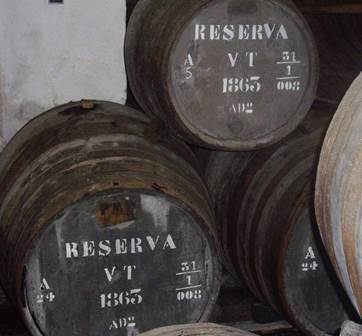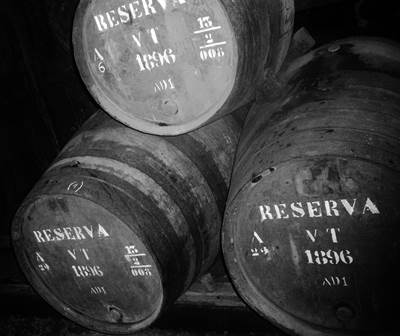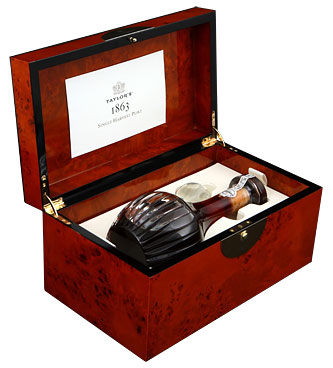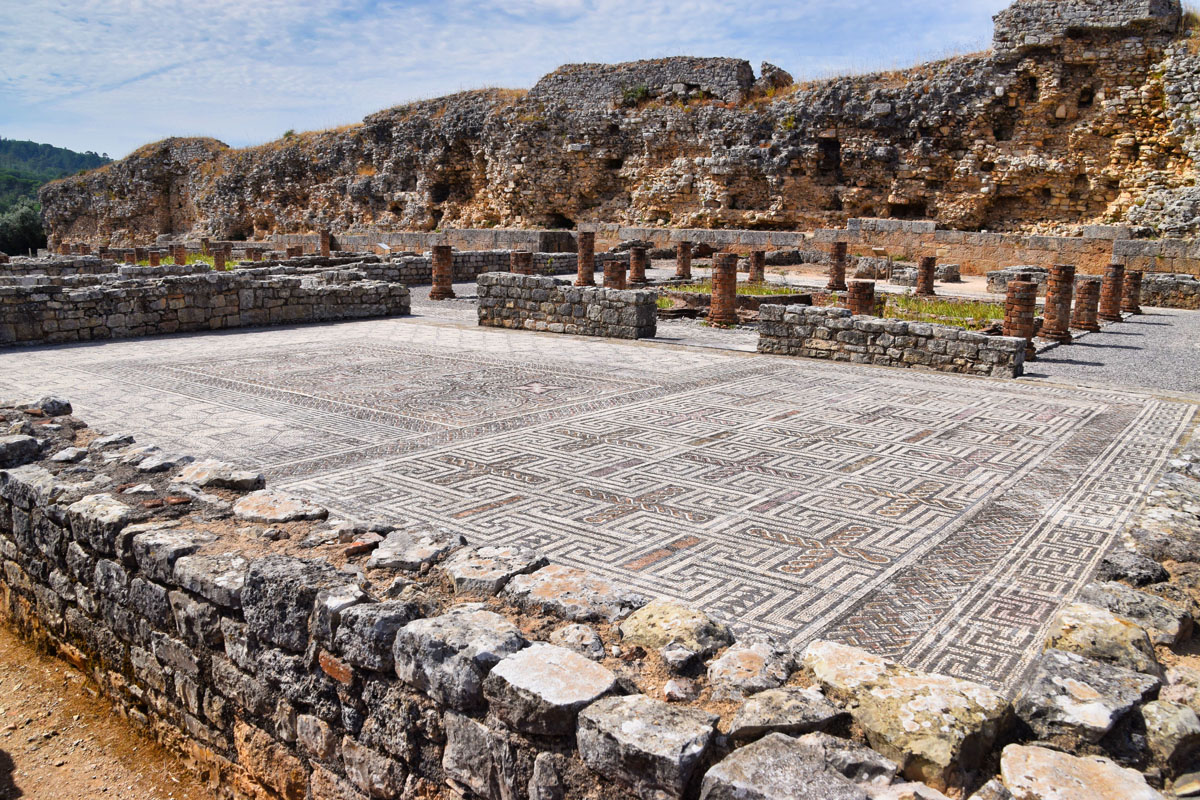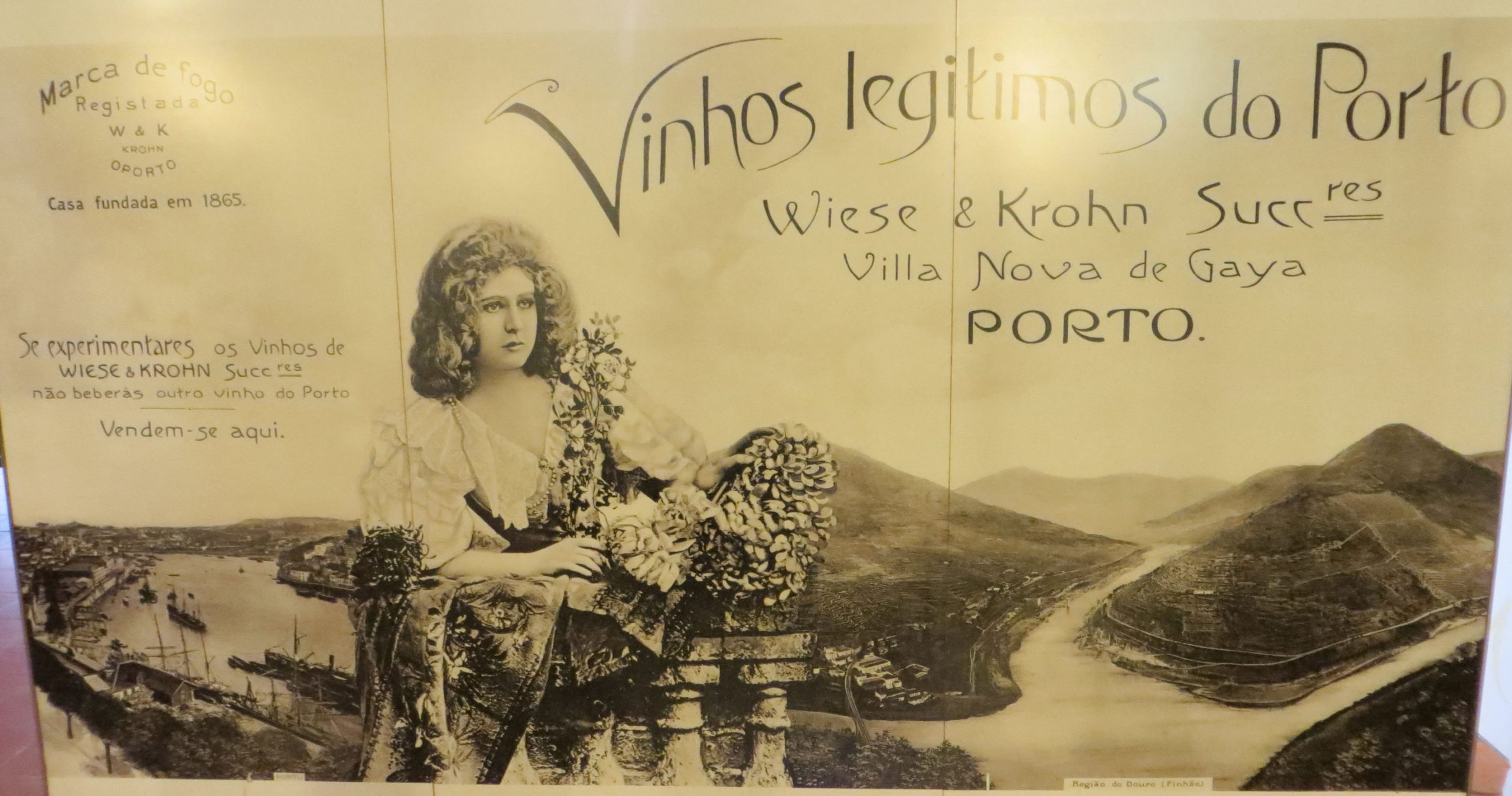
In June 2014, the Port firm Wiese & Krohn was acquired by The Fladgate Partnership for an undisclosed sum. While this is another chapter in the consolidation trend in the Port industry, it is also a perfect moment to pause and look back at the firm’s rich history, and to try and take a glimpse into their future.
The History
Wiese & Krohn was founded in 1865 by two young Norwegians, Theodor Wiese & Dankert Krohn.
|
|
|
|---|
Theodor Wiese was born September 2, 1841 in Bergen, on the west coast of Norway. He studied Commerce, and at the age of 17 he began his career working in Bergen, Norway. He later moved to Spain, where he worked for a commercial firm, where he likely gained a lot of his international trade experience. He moved to Oporto, Portugal, and began a business importing Norwegian fish to the Portuguese market. After bringing in cod from Norway, he recognized a business opportunity to ship Port wine back to his home country.
He contacted his cousin, Dankert Krohn, to see if he would be interested into going into a Port wine business together. Dankert Krohn, who was born in Forde, Norway on July 28, 1842, was one of eleven children of a wealthy, Norwegian family. He agreed to join Dankert in Portugal, and in 1865 they founded their company. As with most new business ventures, the firm started off small, mainly exporting Port to Scandinavia and Germany. As the company grew, they built a lodge in Vila Nova de Gaia in 1880 to house their stocks of Port wines. In 1875 Wiese decided to leave Portugal, and in 1880 sold his share of the business to Dankert Krohn. Wiese continued to work for the company as an agent in Norway, however, and by all accounts helped to grow the Norwegian market share for the company. In 1887 Weise was appointed vice-consul of Brazil in Christiania. He died on January 2, 1896.
Dankert Krohn had hoped that his home country would appoint him as their Consul in Oporto, but was disappointed when he was passed over. He became a Portuguese citizen, and later was later appointed Danish consul in Oporto. Dankert Krohn died on June 23, 1906. After his death, his window and daughters continued the business, with the assistance of two former employees: J. M. Gomes Figueiredo, a Portuguese bookkeeper, and Edmund Arnsby, a British manager.
|
|
|
|
|---|
The next period of commercial growth saw the firm expanding into markets such as France, Belgium and the Netherlands. In 1921, Gomes Figueiredo retired, and Edumund Arnsby acquired his shares of the company. Arnsby brought on two new partners – his brother Frederick (who was an experienced Port taster with Croft), and Edmundo Falcão Carneiro, a Portuguese export manager who had been with the firm for 11 years. When Edmund Arnsby died in 1933, and his brother Frederick in 1937, Edmundo A. Falcão Carneiro acquired the remaining shares of the company and became the sole owner. Despite the firm now being a wholly owned Portuguese firm, he kept the company name Wiese & Krohn. The company remained in the Carneiro family for three generations, the last being Proprietor José F. Falcão Carneiro (who started with Wiese & Krohn in 1979), and his sister Iolanda Carneiro (Winemaker).

The Quinta
Quinta do Retiro Novo is located in the town of Sarzedinho in the Rio Torto valley. It was originally acquired by Manuel Magalhaes and remained in his family until his granddaughter Maria Leonor Magalhaes Bacelar sold it to Wiese & Krohn in 1989.
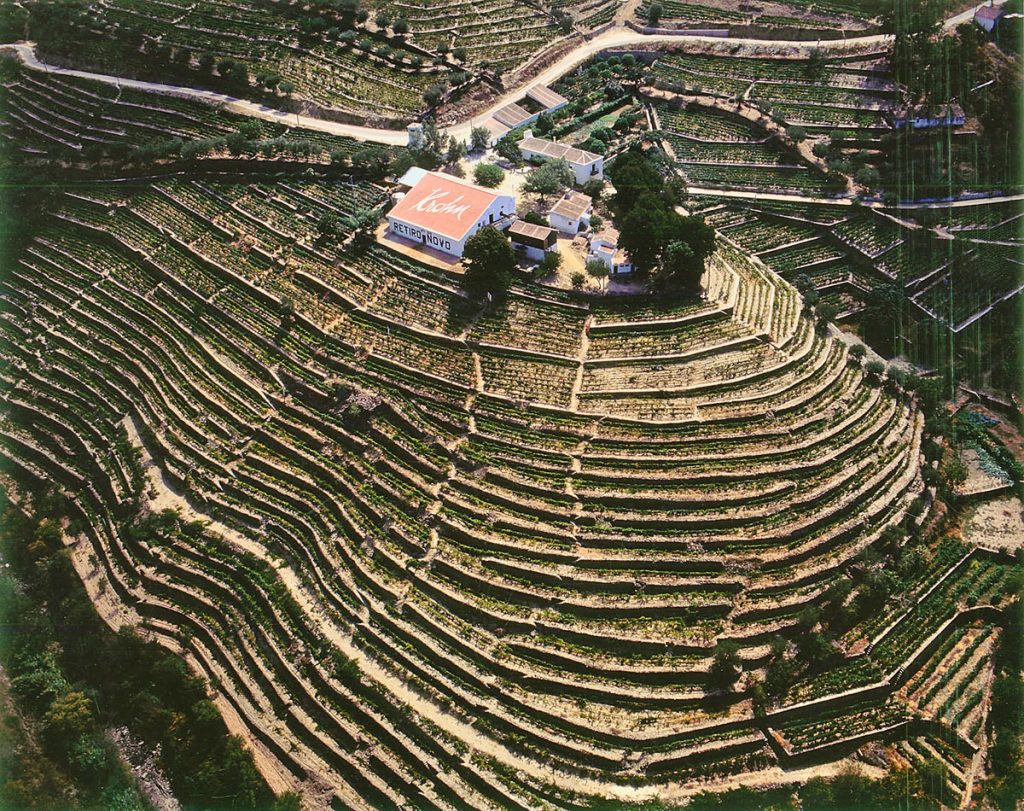
The Quinta contains approximately 36 hectares of vines, some that exceed 100 years of age. Most of the older vines are “field blends” with plantings of various red Port grape varietals, including Tinta Barroca, Tinta Cão, Tinta Roriz (Tempranillo), and Touriga Nacional, all interspersed. Newer parcels have employed block planting, with single grape varietals all being grown together as opposed to mixed in with other varietals.
The body that regulates the Port wine industry rates Quintas based on a number of factors, and gives them both numeric and a letter rating (A-F, with A being the highest). Some of the factors that are considered in rating quintas are the age of the vines, altitude, vine density, gradient, granite & schist content of the soil, types of grape varieties planted, overall location of the vineyard, microclimate, vineyard soil type, vine productivity and vineyard maintenance. The rating also helps to determine the quantity of grapes the vineyard is permitted to harvest. Quinta do Retiro Novo’s numeric score exceeds 1200 points, which put it into the elite “Class A” properties.
The quinta possess the traditional old granite lagars, which are open tanks about 75 cm high where wines can be foot-trodden in the traditional manner. It also has more modern stainless-steel tanks where computerize robotics simulate human treading to mechanically crush the grapes.
The Wines
Wiese and Krohn produced Vintage, Late Bottled Vintage and Colheita Ports, as well as Douro red wines. Wiese and Krohn has registered stocks of Colheita Ports dating back to 1863, and they have produced Vintage Ports since at least 1927:
Vintages: 1927, 1934, 1935, 1947, 1950, 1952, 1957, 1958, 1960, 1961, 1963, 1965, 1967, 1970, 1975, 1978, 1982, 1984, 1985, 1991, 1995, 1997, 2000, 2003, 2004, 2005, 2007, 2009, and 2011.
In addition, they started producing a Single-Quinta Vintage Port (Quinta do Retiro Novo Vintage Port) in 1997:
Quinta do Retiro Novo Vintages: 1997, 2000, 2004, 2005, 2007, 2009, 2011
They began also making Douro red wines in 1996 under the Valtorto brand.
The Acquisition
Krohn experienced a surge in growth over the past few years, shipping an estimated 140,000 cases annually. But it was their aged tawnies – Krohn’s historical strength – and the growing market for old, aged tawnies that seemed to attract the attention of The Fladgate Partnership.
On June 13, 2015, The Fladgate Partnership announced its purchase of Wiese & Krohn. Adrian Bridge, The Fladgate Partnership’s CEO, commented: “The recent growth and interest in aged tawnies worldwide has fueled our interest to expand our stock and introduce a range of exceptional Colheitas to our portfolio for the first time.” While the purchase price was not disclosed, Bridge commented, “Buying the company was expensive but we believe the benefits are worth it.” It was reported that the purchase would increase the size of The Fladgate Partnership “by 10%.” The purchase included Wiese & Krohn’s brand, their quinta (Quinta do Retiro Novo), their vineyard holdings, and a reported 5 million liters of wine stock stored in the Douro and in six cellars in Vila Nova de Gaia.
|
|
|
|---|
The Future
I had the recent opportunity to talk with Adrian Bridge, CEO of The Fladgate Partnership about the acquisition of Wiese & Krohn:
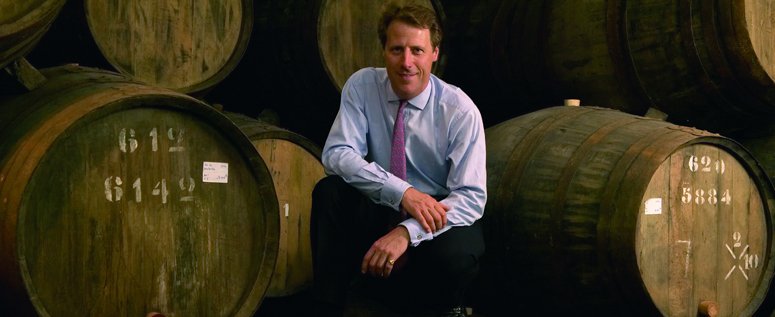
ST: Historically, the Scandinavian market was a big market for Wiese & Krohn. What’s your sense of the market reaction to the acquisition? Do you have any plans to do anything different or additional for that market as a result of the Wiese & Krohn brand’s traditional strength there?
AB: For a company that was founded by Norwegians, the absence of the brand from that market made no sense to us. Thus we are introducing it to Norway. The other Scandinavian countries are run by monopolies and so it depends on when they call for tenders.
ST: I’m curious as to how much inventory The Fladgate Partnership acquired in the trade and what the rough breakdown was (VP vs. Aged Tawnies, etc.).
AB: The exact stock levels were not public but as Wiese & Krohn had a substantial business making a Buyers Own Brand (Private Label) for a French customer, over 80% of the stock was current wine. Yes, there were some fine old tawnies. The oldest commercial blend sold by Wiese & Krohn was a 30 year old, but they had substantial stocks of wines over 40 years of age.
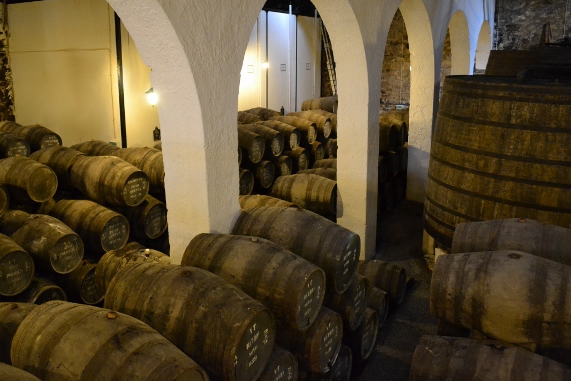
ST: I’ve always thought of the Wiese & Krohn style as more of a “Portuguese” style of tawny – lots of acidity, sometimes bordering on Madeira-like qualities. Your aged tawnies (10 year old, 20 year old) obviously reflect a “Taylor” house profile, which to me is a markedly different style. With access to Wiese & Krohn’s old stocks, will you be blending any of those into your own tawnies? If so, how do you think that will influence the overall Taylor profile?
AB: Wiese & Krohn will continue as a brand and will continue to produce a range of wines. We have made some small changes but we expect to continue to invest in the markets that Wiese & Krohn was serving, as well as adding some additional markets. Taylor has our own substantial stocks of old tawnies, so we do not need to cross blend between the houses. However, where the Wiese & Krohn stock has had outstanding quality (1863, 1964, etc.), we have launched a Colheita Port under the Taylor name using those stocks.
|
|
|
|---|
ST: Since the acquisition, what’s been the biggest surprise for you in relation to Wiese & Krohn? Any high or low points that stand out?
AB: We bought the business in June of 2013 and ran it as an independent company until the staff went out on their summer holidays in August. They returned to new positions in the group. We merged the bottling lines and closed the offices. We have since sold/swapped the offices with Sogrape for their space next to Taylor. One motive for the purchase was that the spirit costs in the 2013 harvest were very high so that we did not need to do a substantial harvest that year as we were able to use the current stock of Wiese & Krohn. Thus the whole operation has gone smoothly. We are very pleased with the distribution partners that Wiese & Krohn had and we are excited to work with them to further develop the brand.
ST: What are a few questions that you’ve gotten from others about Wiese & Krohn that you think the FTLOP readers would like to hear?
AB: I have not had that many. Wiese & Krohn was a good company. We have given employment to all the staff that wanted jobs following our purchase. Those new members of our team are performing well. We continue to invest in our core business of Port and we strongly believe in the growth of the special category Ports. In the Douro we have incorporated the Quinta (Quinta do Retiro Novo) into our style of vineyard management. The winery is very big for our needs given that we have two other modern wineries, so we are evaluating what we do with it in the future.
ST: What is happening with the Krohn Visitor’s Center in Vila Nova de Gaia?
AB: Wiese & Krohn did not actually own the Visitor’s Centre. It was leased and run by a third party. The owners of the property were able to propose a new rent as a result of the change of ownership of Wiese & Krohn. The rent they proposed was about 3 times the market rent. The third party who ran the Visitor’s Centre considered the options (Wiese & Krohn was not involved in these discussions), and ultimately did not wish to pay this new rent as it made no economic sense. The Visitor’s Centre was shut down last September.
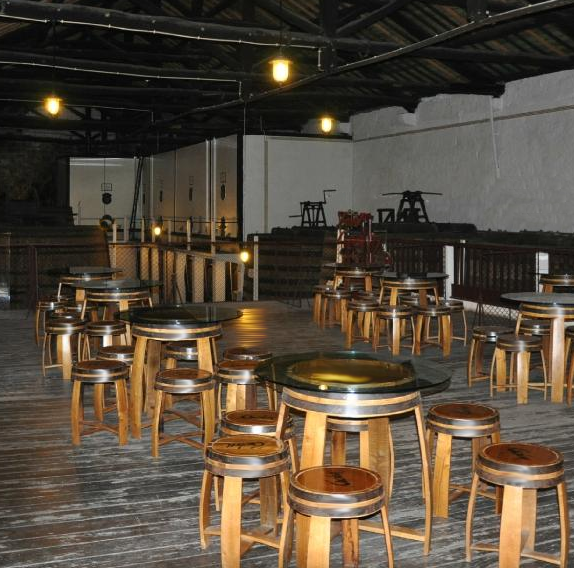
Select Tasting Notes
(Courtesy of Roy Hersh)
1960 Krohn’s Colheita Port – FTLOP 6th Anniversary Celebration. Bottled in 2006. The last time I had this was nearly a decade ago and it did not wow me back then, at least that bottle didn’t. This is a few shades darker than the Kopke 1957; coffee/molasses brown with a golden-amber rim. It delivers a reductive nose of soy and teriyaki sauces, potpourri, toasted almonds and a tangy streak of citrus peel. As breathtaking as an extreme rollercoaster ride, the palate of the ’60 Krohn dazzles with intensity due to the laser focused cutting edge of the acidity. Beyond the cut is a rich, chewy and velvety textured crème brûlée-like profile with chocolate nuttiness, tangerine sweet and sour, and maple syrup drizzled on slowly to add an extra layer that lingers on the profound, delicate finish. This was the winning Port of the entire tasting and a huge surprise at that (at least for me!). Sheer elegance in a glass! 97 Points.
1964 Krohn’s White Colheita Port – Poured by Axel Probst post Barco Rabellos regatta. Brilliant showing and I could tell the Krohn’s wood-aged character and my blind guess was close in terms of age, but I did not think it was a white Colheita. Such a laser-focused acidity that enables this Port to evoke a level of intensity that is hard to match. The palate delivered a mélange of dried figs and apricots along with mandarin orange and toffee. I am not sure what I loved most here, the richness and soft texture or the superb length of the finish. 94 points.
1965 Krohn’s Colheita Port – Displaying a dark hue of honey, candied walnut flavors with some rock candy notes that are smooth on the palate and show great complexity. Unfortunately, a hot and spirity finish spoiled the initial pleasure. I have enjoyed this Krohn more at other tastings and know Colheita lovers who speak very highly of this particular wine. 87 points.
1966 Krohn’s Colheita Port – Bottled 2007. Andy’s LA Offline – Tea colored with a light golden edge. This was a fine Krohn and reminded me why I hold the Colheitas from this producer in such high esteem. Lovely cherry wood, almond, minty spirit and figs on the palate. Light-medium weight, soft, subtle, lithe acidity that provides balance and backbone. Sweet with a citrus-centric style along with maple and caramel which dominate the pronounced aftertaste. Delicious! 93 points.
1976 Krohn’s Colheita Port – Bottled in 2012. Dark amber-tawny with ruby glints at its core and a wide sunset orange rim. This Colheita possesses an intricate and ethereal nose that delivers a pungent VA impression initially, Madeira like, but none was noted the second day. The smell of this Port is incredibly complex and delivers aromas including cinnamon, orange crème brûlée, honey and mahogany in unison. Drinking this Krohn is like sipping on a liquefied pecan pie with a dollop of peach sorbet, followed by a creamy and smooth mouthfeel that was absolutely fabulous. The interplay of sweetness and acidity is impossible to miss in this Krohn 1976 as it captivates and delights the palate. 95 points.
1978 Krohn’s Colheita Port – At O’Paparico in Porto, with Mario. Oh what a difference two years makes. This is a good but not great Krohn and in a very different stratosphere from the 1976 that I had the previous night. They were out of the 1976, as we had the last bottle in stock. Nose of spicy white pepper, light VA, molasses, espresso, crème brulee and a very nutty edginess to the aromatics. Medium-full weight, excellent acidity sharp but focused, there was a bitter nutty flavor akin to the skin on a walnut. Dates, figs, seductively smooth texture, long persistent finish, caramelized sugar prevails long after the swallow along with loads of citrus, but rich and nutty. 92 points.
2003 Krohn’s Vintage Port – Sometimes noted as Wiese & Krohn, this to my knowledge is the first Vintage Port I have ever tasted from Krohn although I have had quite a few Colheitas back to their 1960 bottling. The company history is compelling as Wiese, a cod fish importer in Oporto, asked his cousin Krohn both were Norwegians to join him in a Port company in 1865. Successful after a decade, Wiese retired and went back home while Krohn stayed and retained ownership of the company. The 2003 is a very dark garnet colored Port that offers violets and red berry fruit scents once given plenty of time to open up. This started off as a light-bodied wine but over a number of hours, picked up some weight on the palate. I found it enjoyable, mostly balanced and a tad simple, yet tasty. It showed semi-sweet juice with mild tannins that allow this wine to be consumed early. There was a medium length finish depicting a slightly hot aftertaste. 87 points.
2007 Wiese & Krohn’s Quinta do Retiro Novo Vintage Port – Cask sample. If this does not sound familiar, it is a Quinta belonging to Wiese & Krohn (typically known by Port lovers as Krohn). It is located near Quinta Bom Retiro in the Rio Torto Valley. The property encompasses 26 hectares of which 15 is planted to vineyard and they produce about 70-80 pipes per year from their own grapes. DOC Douro wine is also produced here. I’ve never tried a Vintage Port from this SQ property before May 2009. What a pleasure it was to discover this VP which I had a few weeks earlier when visiting with the owner of Krohn. This note is from my blind tasting at the conclusion of my Port seclusion with the 2007 lineup. Fresh and fragrant carnations perfume, with scintillating scents of marionberry, spice and vibrant raspberry aromas. Over several days this morphed from a primary grape flavored drink to a more pronounced and layered Port consisting of cassis, boysenberry and ultra-smooth and concentrated blackberries. The purity is what captured my attention, along with the complexity in the mid-palate and extraordinary finish. I know that the guests on the Fortification Tour were smitten by this particular cask sample. It is obvious why they fell in lust; there’s a lot to enjoy here. Propped up by profoundly age worthy and dense tannins, the aftertaste is nothing short of extraordinary. I had to smile when the foil came off this bottle. This Krohn’s SQVP is one to seek out and cellar for at least three decades. Fabulous juice! 94 points.
2007 Wiese & Krohn Vintage Port – Cask sample. Having visited Wiese & Krohn earlier in May and enjoying this Port along with numerous others; I was pleased to come across this again a week or two later while evaluating samples in Gaia. Sassy scents of bright red berry fruit with marionberry at the fore, but also some vibrant ripe plums and a hint of mint. Soft, generous and it drinks as well now as it will in future decades, although further complexity will certainly change it. Nonetheless, this was concentrated and sublime, well-balanced and refreshing in its youthful charms. It’s one of the rare examples where the Single Quinta VP outshone the regular bottling in 2007. Either way, Krohn is now making exciting young Vintage Ports in addition to their inimitable style of wood-aged Colheitas. 91 points.
2011 Krohn’s Vintage Port – This will be a collector’s item, the lasting legacy of a renowned and beloved Port shipper, likely the last Vintage Port produced by the Carneiro family. A subtle overlay of fresh figs, fennel, tree bark, minerals and mocha create a nose that leaps from the glass. Medium-full, super smooth and gentle in the mouth, until the tannins come out to play and they’re seriously ripe saliva extractors. Impressively stacked with huckleberry and plum flavors, dry in nature and quite seductive on the palate. The finish is long and laden with cocoa and grape essence. A well-made vintage offering, but admittedly, I found even greater stuffing and delineation in the mid-section of Krohn’s single quinta Port. Nonetheless, this is a very fine VP and will drink well later in this decade when the tannins are tamer. The 2011 Krohn Vintage Port will cellar well for up to 4 decades. 93 points.
2011 Krohn’s Quinta do Retiro Novo Vintage Port – Retiro Novo is located in Sarzedinho, a very small village in the Rio Torto valley. It had belonged to the Carneiro family until they sold Krohn to The Fladgate Partnership in June 2013. The 2011 Vintage Port is possibly the last Vintage Port to be produced with the Krohn name on it, making it somewhat of a collector’s item. Aromatically profound with great purity, floral notes as well as blue and black fruit and accented by intense mocha. This Single Quinta VP is a weighty Port that is rich, smooth and possessing penetrating and grippy tannins. Bold briary blueberry and flavors of fig prevail with a backdrop of chocolate and an incredibly soft and succulent texture. The mid-palate is nuanced and bright, with sleek lines and a long and persistent aftertaste. Given the fine structure of this wine, it will certainly make for old bones and should drink beautifully at the midpoint of this century, possibly longer. 94 points.






